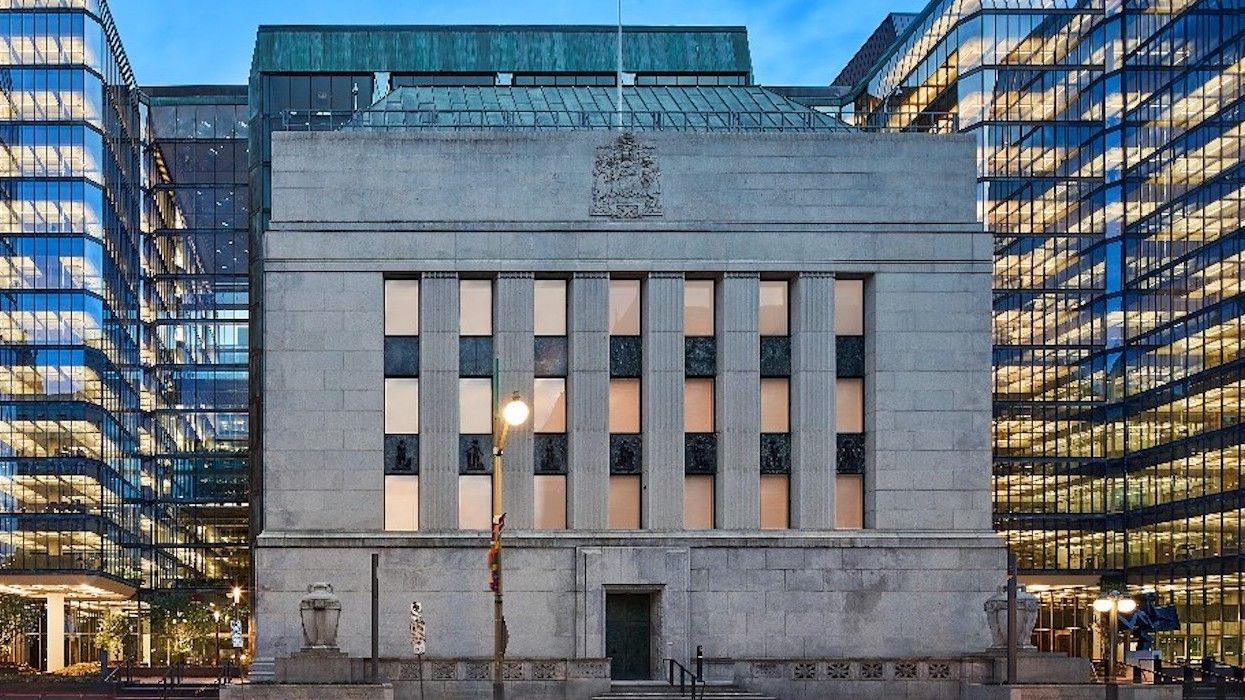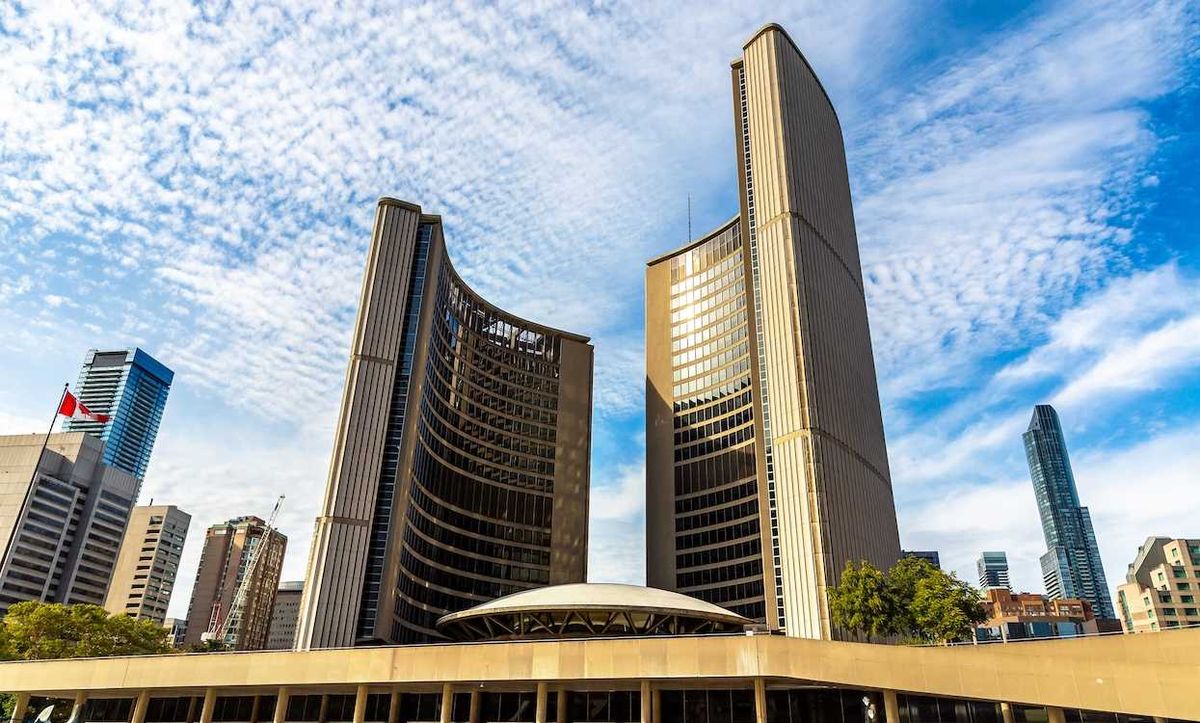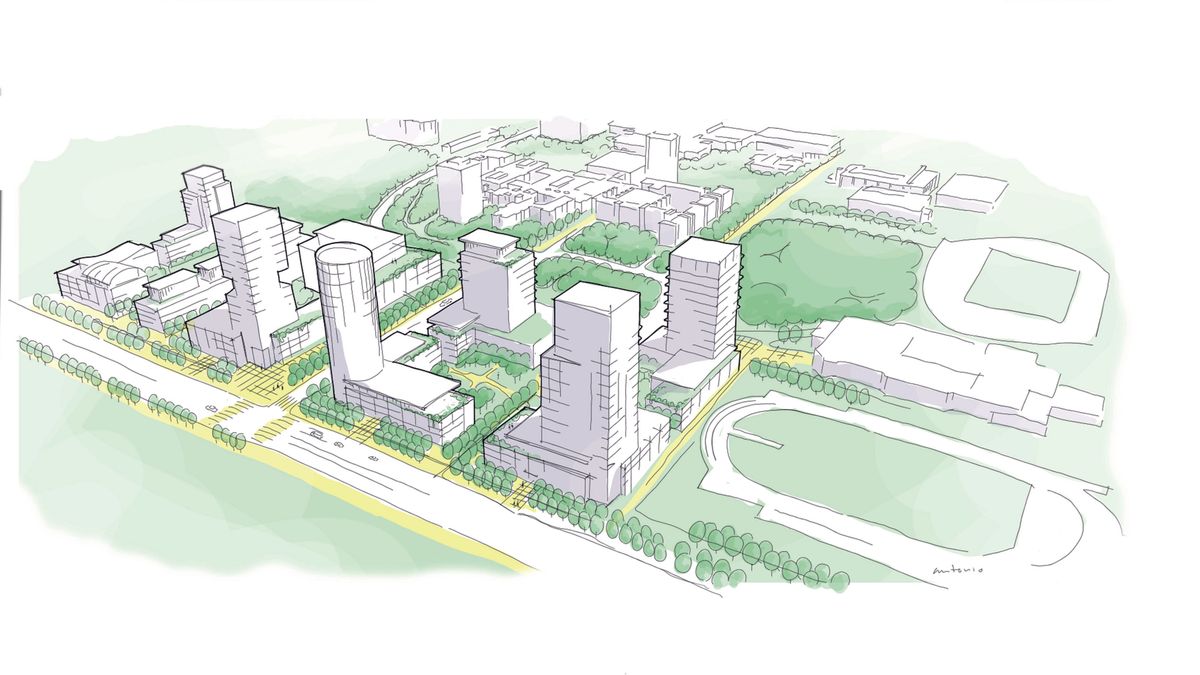After taking a beat in May, the Bank of Canada (BoC) is set to make its latest interest rate announcement on Wednesday, and amid trade tension that has, to varying degrees, begun to show up in economic data, there’s ample reason for the central bank to cut this week, after holding the policy rate steady at 2.75% in April for the first time in a full year.
At the same time, the Bank has said on more than one occasion that the 225 basis points (bps) worth of cuts delivered since June 2024 are still working their way through the economy, and that they’re wanting to avoid lowering the policy rate too hastily when we’re still in a foggy territory with tariffs.
“While there were differences in views, everyone agreed there was a great deal of uncertainty and the situation could change quickly. They also agreed they should be less forward looking than usual,” Governing Council said in its latest summary of deliberations, adding that they will “continue to refine and evaluate different trade policy scenarios” and “maintain a robust survey and outreach plan to better understand in real time how the economy is adapting.”
Council additionally said it will be looking at the following factors when assessing future rate cuts:
- the extent to which higher tariffs reduce demand for Canadian exports;
- the impact of lower export demand on business investment, employment, and household spending;
- the degree and speed at which cost increases are passed on to consumer prices;
- the evolution of inflation expectations.
The BoC is set to put out five more interest rate decisions through 2025. Here’s what economists with Canada’s ‘Big Five’ banks are anticipating for this week’s decision — scheduled for the morning of Wednesday, June 4 — and for the remainder of the year.
TD: “Two more cuts likely on the tap”
At the end of last week, we got some semblance of good news on the trade front, with the US Court of International Trade issuing a ruling that could end the 25% tariffs on non-CUSMA compliant items, as well as the 10% tariffs on energy and other critical minerals. Although TD Economist Rishi Sondhi writes in a May 30 report that there is a chance for the ruling to be appealed, he also points to an improvement in sentiment as we head into this week’s rate decision.
“However, product-specific tariffs are unaffected by the decision, leaving Canadian steel, aluminum and autos still tariffed. What’s more, the US can use other means to impose tariffs, so the global trading system is not out of the woods yet,” Sondhi cautions.
For this week’s rate decision, markets are forecasting another hold — “especially with a hot core inflation print in April, the federal election bringing the possibility of stimulus, and some global de-escalation in the trade war since the Bank’s last decision in April,” according to the report.
However, the latest job data should not be ignored, with the unemployment rate rising to 6.9% in April, according to Statistics Canada (StatCan). “Canada’s jobs market is weakening — a narrative reinforced by this week’s payroll data, and domestic activity flatlined in the first quarter,” says Sondhi. “As Canada is likely entering a weak growth period, two more cuts are likely on tap for this year, even if the Bank stands pat next week.”
The long-term forecast: The policy rate will be brought down to 2.25% this year, and be held at that level through 2026.
RBC: ‘Still a close call’
We also ended last week with the latest GDP numbers from StatCan, which showed that the economy edged up ever so slightly by 0.1% in March, month over month, only partially erasing February's 0.2% contraction.
“The Bank of Canada’s interest rate decision next week will still be a close call, but with economic data holding up better than feared — and inflation in April surprising broadly on the upside once controlling for the removal of the consumer carbon tax from energy products — a second consecutive hold on the overnight rate looks more likely than a cut at this stage,” say RBC Economists Nathan Janzen and Abbey Xu in a commentary put out Friday.
Janzen and Xu doubled down on their sentiment in separate report looking ahead to the week of Jun 2, saying that “consumer spending has held up better than expected in March and April” and that “recent job postings on Indeed.com suggests hiring demand may be stabilizing,” with flat unemployment anticipated in May.
“A US court ruling blocking some of the Trump administration’s tariffs (including blanket tariffs on most US trade partners in April) is under appeal, and the tariffs are still in effect for now. But CUSMA-compliant Canadian exports were already exempt from those measures. Sector-specific US tariffs on steel, aluminum and vehicles remain as well, but we estimate more than 86% of Canadian exports still receive duty-free US market access under the current rules,” they write.
“The BoC has already cut rates by 225 basis points over the past year — more than other central banks. It still has room for further cuts if economic conditions weaken, but will need to consider any government spending support measures, which are better suited to provide targeted, timely, and temporary assistance to affected sectors than interest rate cuts.”
The long-term forecast: The policy rate will be brought down to 2.25% this year, and 2.50% by the end of 2026.
Scotiabank: “Can’t just take one chip out of the bag”
Economists with Scotiabank have long been calling for a series of rate holds through 2025, and they’re not deviating from that forecast as we head into the June decision. In a May 30 report, Economist Derek Holt points out that markets are also down to a one-in-five chance of an interest rate cut, after pricing one strongly for April.
“I’d be the first to say that the BoC should do the right thing without caring about markets, but at least we can say the BoC shouldn’t be worried about any market dislocation effects if it did nothing this time,” he says.
“But cutting now when it’s nowhere close to being priced and after holding since March could motivate markets to think that the BoC is priming for another round of easing. You can’t just take one chip out of the bag. Markets would probably price another cut for the July meeting and maybe add more later. You’d better have a lot of confidence that a cut now is the right thing to do given the risk that it could spark outsized easing of financial conditions compared to the policy rate adjustment itself.
In addition, the BoC has never cut when core inflation was as high as it is right now, notes Holt, in a nod to BoC Governor Tiff Macklem’s year-end speech in December, in which he said that the Bank will need to see “further and sustained downward momentum in core inflation” before it can consider further easing (and more from Holt on why core is still elevated here.)
“At 4½% m/m at a seasonally adjusted and annualized rate, the average of the trimmed mean and weighted median measures of inflation in April was off the charts compared to every time the BoC has cut in the past three decades,” he says. “The BoC has only twice cut when this measure was over 3%. Twenty-two out of thirty-six times when they’ve cut inflation has been under 2% including nine when it was at 1% or less. […] Absent extremely good arguments, it would be disconcerting if an inflation-targeting central bank already at — or possibly below — neutral were to see fit to add more to monetary policy stimulus without a shred of evidence that they’ve been able to bring this measure within the target zone.”
The long-term forecast: The policy rate will be held at 2.75% this year, and brought down to 2.0% in 2026.
CIBC: “We argue a cut would be the right step”
Over at CIBC, the recent elevation in core inflation is high of mind as well, which Economist Andrew Grantham says in a commentary “puts a question mark” over their previous expectation that the BoC would cut this week. However, in a separate report from Friday, Economist Avery Shenfeld says the Bank should be “looking past” the recent momentum in favour of a rate cut — contrary to CIBC’s Holt.
Shenfeld says a cut this month is “readily” justified, given that GDP only saw a slight uptick in April, and meanwhile, “a widening output gap is even more apparent in ugly numbers from both the [Labour Force Survey] and [Survey of Employment, Payrolls and Hours] reports in the last couple of months.”
“But while we would argue that a cut would be the right step, odds are that the Bank of Canada won’t deliver one just yet, having signalled that it’s less willing to be forward looking amidst considerable uncertainty over the outlook,” Shenfeld went on to say. “So we look for a pause next week, but one accompanied by a message that leaves the door open for rate relief ahead. Unless a sudden peace breaks out in the trade war, by the July meeting, the Bank should have sufficient clarity to actually publish an economic forecast, having not done so in April, and a wider output gap should green light a quarter point cut then and in September.”
The long-term forecast: The policy rate will be brought down to 2.25% in 2025, and be held at that level through 2026.
BMO: “Not the end of the line for rate cuts”
Although economists with BMO are calling for “mild pullback” in Canadian GDP in both the second and third quarters, they’re also forecasting growth for 2025 and 2026 to be “a bit above 1%” — which is not so far off from the 1.5% average pace of 2023 and 2024.
Supportive fiscal policy is one reason for a less-negative growth outlook: this week’s Throne Speech reinforced Ottawa’s ambitious agenda for the new Parliament. After actually subtracting from Q1 GDP growth, we look for a fiscal push in coming months,” writes Economist Douglas Porter in a May 30 publication. “The combined federal/provincial budget deficits are poised to step up this fiscal year by roughly 1% of GDP (or by about $35 billion). Notably, unlike in the US, there is precious little concern over the sizeable ramp up in budget deficits, at least at the federal level, because the starting point was reasonable.”
In addition, Ottawa’s latest monthly budget figures came out on Friday, and those show that the 12-month rolling deficit has pulled back from $50.9 billion to $43.2 billion as of this past March.
“Those are not the final figures, as end-year adjustments can push the overall deficit higher. For the current fiscal year, we look for that overall figure to top $60 billion, or 2% of GDP,” says Porter. “All of this adds up to a less pressing need for monetary policy to support the economy. While the Bank will share our concerns over the employment outlook, robust financial markets and surprisingly sturdy GDP growth will provide an offset. Meantime, the back-up of core inflation to above 3% will keep the Bank more cautious, suggesting that rates will be held steady at next week’s decision.”
Looking ahead, Porters says, “this is not the end of the line for rate cuts,” but that BMO is adjusting its forecast to reflect cuts restarting in late July, and lasting until early 2026. “We are still circling the likelihood of a 2.0% end-point for the overnight rate, on the view that policy will need to be a bit below the neutral range amid the ongoing trade cloud,” he adds.
The long-term forecast: The policy rate will be brought down to 2.0% in 2025 or early 2026, and be held at that level through 2026.























